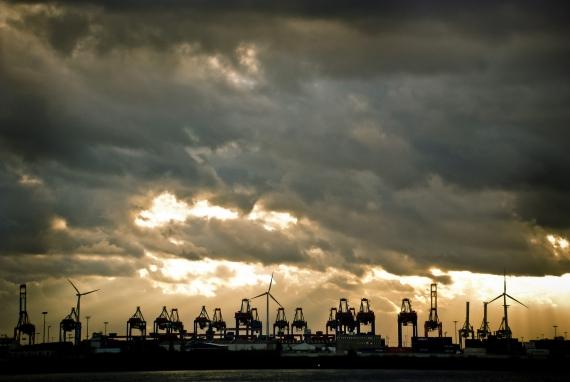7 Key Things to Look For When Buying Residential Land
Posted: October 29, 2015 by LandCentury

Whether you're buying residential land to build your dream home or for investment purposes, its important to know what to look for when searching for vacant land. Buying land is not like buying a home, and the process can be complex if youre inexperienced.
Heres what to look for when searching for your dream piece of property:
1. A Buildable Lot
First and foremost, you want to look for lots that are buildable. But be forewarned that there are many different definitions for the term buildable. To some, buildable simply means that the city or county you live in will allow you to build on the site. To others, the term buildable is used to describe the lands characteristics. Maybe the property has very gentle sloping and high acreage, which doesnt say much for the true development potential the property has.
What you want to look for is a lot with utilities on site, all feasible studies completed, and ideally, permits and services already available. In the very least, you want to make sure that it wont cost more to prepare the lot for development than the actual building process itself.
2. Location
Naturally, the location of the property is also important. Research the area to learn more about local schools, jobs, medical facilities, and entertainment. Finding a lot in a desirable area will provide you with a better return on your investment.
3. CC&Rs (Covenants, Conditions and Restrictions)
When searching for a piece of residential land, youll need to decide whether youre going to build on an unrestricted subdivision or a restricted subdivision.
Unrestricted Subdivision: Unrestricted subdivisions dont have a POA or HOA. These areas dont have an enforcement committee that assures property values or works to maintain a certain appearance. That said, unrestricted subdivisions may still have restrictions in place that are imposed by the state, city, or county. These restrictions are listed in the deed to the property.
Restricted Subdivision: In a restricted subdivision, deed restrictions are implemented by the initial developer. These restrictions are different for each master-planned community and subdivision, and are enforced by either a Property Owners Association, or a Home Owners Association. In the subdivisions, homeowners will be required to comply with these restrictions in order to protect property values. Some restrictions might include the size of the home, how many homes can be built on a lot, setback lines, types of homes that can be built, care and upkeep of the home, and even rules about pets or other animals. HOA or POA fees will need to be paid either monthly or yearly to help maintain the subdivisions roads, crevasses, signs, pools, and any other improvements that may be necessary.
Depending on your plans, you may find that its better to purchase land in an unrestricted subdivision where there arent so many rules and restrictions that may prevent you from building the home of your dreams.
4. Zoning and Utilities
Even if you already know that the land youre considering is zoned residential, its important to make sure that the surrounding areas are not zoned differently. For example, if land that surrounds the property is zoned commercial, buildings can be erected for industrial use. If land is zoned agricultural, a farm can be put in with a large number of livestock. Either of these situations can make living conditions unfavorable. Ideally, land that surrounds the property will also be zoned for residential purposes.
Its also important to find out if utilities are already on site, or if you have to run them yourself. Are there water, sewer, gas, cable, and telephone service connections available? If not, youll need to contact the service provider and have a line run for an added fee. This tends to be a problem in rural areas, and can often add thousands of dollars to the cost of the project.
5. Possible Environmental Hazards
Make sure that the property you are considering is free of any possible environmental hazards. This may include fuel or chemical storage tanks, or contaminated water or soil. Before buying any piece of land, its crucial to have a phase 1 environmental study performed (for a fee) to ensure that there is no contamination on the property.
6. Easements, Home Placement, and Neighbors
Another thing to consider: who will have access to your property? Access can include oil companies, utility companies, natural gas companies, and even easements that allow for access to neighboring properties. Any appointed easements will have a profound effect on where you can build your home, so its important to determine the location of any easements of the property.
With set back lines and easements in mind, its important to consider where you will be able to place the home. Again, these two factors will affect where you can actually build the home, so make sure these two conditions are favorable when buying property.
Another important thing to consider is neighboring property. It may seem trivial, but its crucial to find out who your future neighbors will be. No matter how much acreage you purchase, the way your neighbors upkeep there properties will have an impact on the value of your property even if you cant see their property from yours.
7. High-Growth Areas
If youre purchasing residential land and developing for investment purposes, you want to look for properties in high-growth areas. These are areas where populations and economies are growing, which means that properties are in higher demand.
Land in high-growth areas will provide you with an excellent return on your investment. Naturally, plots of land that are closer to bigger cities are the best option. Rural properties can provide you with a nice return, but are not as valuable. This is because these properties are so far away from local jobs, nightlife, entertainment, medical facilities, and shopping.
When buying residential land, its important to ensure that the property undergoes several inspections before you commit to making a purchase. Its essential to ensure that theres no soil or water contamination, and that conditions on the property are favorable for building.
Heres what to look for when searching for your dream piece of property:
1. A Buildable Lot
First and foremost, you want to look for lots that are buildable. But be forewarned that there are many different definitions for the term buildable. To some, buildable simply means that the city or county you live in will allow you to build on the site. To others, the term buildable is used to describe the lands characteristics. Maybe the property has very gentle sloping and high acreage, which doesnt say much for the true development potential the property has.
What you want to look for is a lot with utilities on site, all feasible studies completed, and ideally, permits and services already available. In the very least, you want to make sure that it wont cost more to prepare the lot for development than the actual building process itself.
2. Location
Naturally, the location of the property is also important. Research the area to learn more about local schools, jobs, medical facilities, and entertainment. Finding a lot in a desirable area will provide you with a better return on your investment.
3. CC&Rs (Covenants, Conditions and Restrictions)
When searching for a piece of residential land, youll need to decide whether youre going to build on an unrestricted subdivision or a restricted subdivision.
Unrestricted Subdivision: Unrestricted subdivisions dont have a POA or HOA. These areas dont have an enforcement committee that assures property values or works to maintain a certain appearance. That said, unrestricted subdivisions may still have restrictions in place that are imposed by the state, city, or county. These restrictions are listed in the deed to the property.
Restricted Subdivision: In a restricted subdivision, deed restrictions are implemented by the initial developer. These restrictions are different for each master-planned community and subdivision, and are enforced by either a Property Owners Association, or a Home Owners Association. In the subdivisions, homeowners will be required to comply with these restrictions in order to protect property values. Some restrictions might include the size of the home, how many homes can be built on a lot, setback lines, types of homes that can be built, care and upkeep of the home, and even rules about pets or other animals. HOA or POA fees will need to be paid either monthly or yearly to help maintain the subdivisions roads, crevasses, signs, pools, and any other improvements that may be necessary.
Depending on your plans, you may find that its better to purchase land in an unrestricted subdivision where there arent so many rules and restrictions that may prevent you from building the home of your dreams.
4. Zoning and Utilities
Even if you already know that the land youre considering is zoned residential, its important to make sure that the surrounding areas are not zoned differently. For example, if land that surrounds the property is zoned commercial, buildings can be erected for industrial use. If land is zoned agricultural, a farm can be put in with a large number of livestock. Either of these situations can make living conditions unfavorable. Ideally, land that surrounds the property will also be zoned for residential purposes.
Its also important to find out if utilities are already on site, or if you have to run them yourself. Are there water, sewer, gas, cable, and telephone service connections available? If not, youll need to contact the service provider and have a line run for an added fee. This tends to be a problem in rural areas, and can often add thousands of dollars to the cost of the project.
5. Possible Environmental Hazards
Make sure that the property you are considering is free of any possible environmental hazards. This may include fuel or chemical storage tanks, or contaminated water or soil. Before buying any piece of land, its crucial to have a phase 1 environmental study performed (for a fee) to ensure that there is no contamination on the property.
6. Easements, Home Placement, and Neighbors
Another thing to consider: who will have access to your property? Access can include oil companies, utility companies, natural gas companies, and even easements that allow for access to neighboring properties. Any appointed easements will have a profound effect on where you can build your home, so its important to determine the location of any easements of the property.
With set back lines and easements in mind, its important to consider where you will be able to place the home. Again, these two factors will affect where you can actually build the home, so make sure these two conditions are favorable when buying property.
Another important thing to consider is neighboring property. It may seem trivial, but its crucial to find out who your future neighbors will be. No matter how much acreage you purchase, the way your neighbors upkeep there properties will have an impact on the value of your property even if you cant see their property from yours.
7. High-Growth Areas
If youre purchasing residential land and developing for investment purposes, you want to look for properties in high-growth areas. These are areas where populations and economies are growing, which means that properties are in higher demand.
Land in high-growth areas will provide you with an excellent return on your investment. Naturally, plots of land that are closer to bigger cities are the best option. Rural properties can provide you with a nice return, but are not as valuable. This is because these properties are so far away from local jobs, nightlife, entertainment, medical facilities, and shopping.
When buying residential land, its important to ensure that the property undergoes several inspections before you commit to making a purchase. Its essential to ensure that theres no soil or water contamination, and that conditions on the property are favorable for building.




